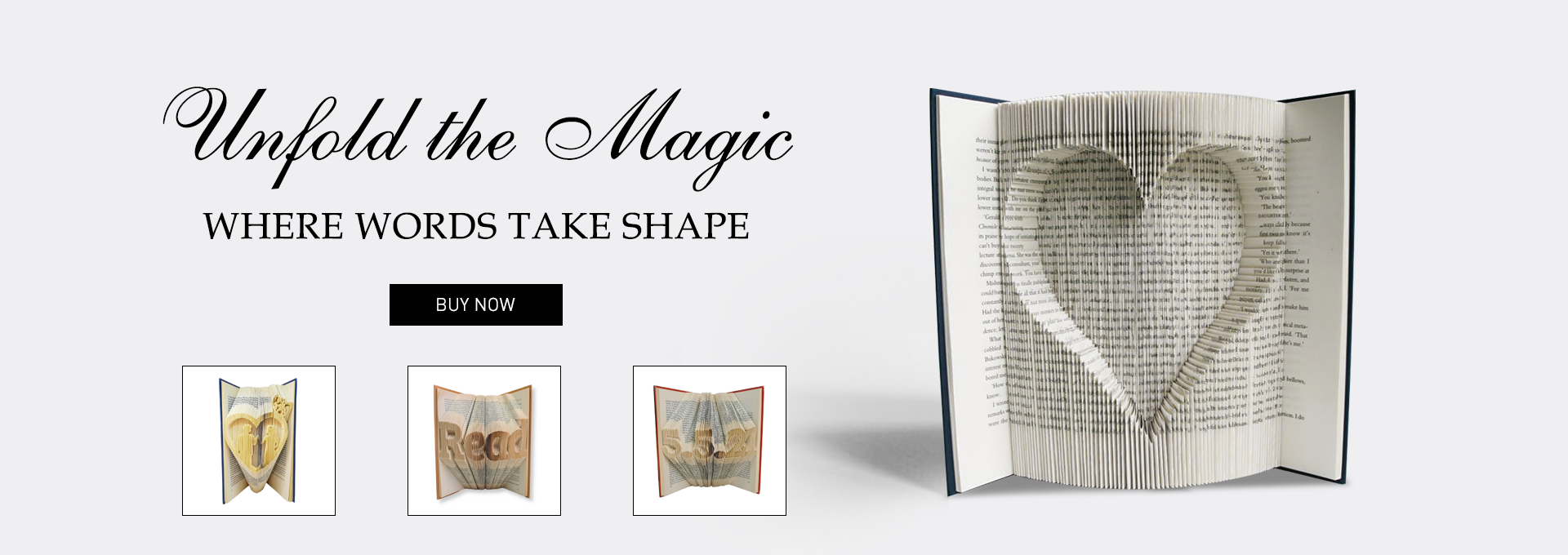Turning Pages into Art: The Magic of Book Folding

Book folding is a fascinating craft that transforms ordinary books into stunning works of art. This innovative technique involves meticulously folding the pages of a book to create intricate designs and patterns that leap off the page. What might initially seem like a simple act of bending paper can result in breathtaking sculptures that tell a story and capture the imagination.
As we explore the world of book folding, we uncover the magic behind this creative process. Artists use a variety of folding methods to shape their designs, ranging from simple shapes to complex motifs. Each piece is unique, reflecting the artist's vision and skill. This art form not only breathes new life into old books but also challenges our perception of both literature and visual art, inviting us to see the beauty in the unexpected.
Origins of Book Folding

Book folding has a rich history that can be traced back several centuries. This artistic practice originally emerged in Europe during the late 19th century, when the technique was popularized by the decorative arts movement. Craftsmen began to experiment with folding books to create ornamental designs and motifs, transforming traditional reading materials into unique pieces of art. As the interest in handcrafted decor grew, so did the appreciation for book folding as a creative outlet.
Throughout the years, various cultures have contributed to the evolution of book folding. In some regions, book folding was used as a method of preserving old texts that were no longer suitable for reading. By folding the pages into intricate designs, artists could give new life to these books while simultaneously showcasing their craftsmanship. This practice not only preserved the physical form of the book but also highlighted the aesthetic qualities of the folded pages, making them a focal point of visual appeal.
In recent times, book folding has seen a resurgence in popularity as a form of DIY art and craft. With the rise of social media and online tutorials, often more people have taken up book folding as a hobby, sharing their creations and inspiring others to explore this unique art form. Modern book folding has expanded to include a variety of geometric patterns, shapes, and even personalized designs, making it an accessible and engaging way for individuals to express their creativity using repurposed books.
Techniques and Tools
To start book folding, the first step is selecting the right book. The ideal choice is one with pages that are thick and sturdy, as this will allow for cleaner folds and better durability in the final design. It is also important to choose a book that is large enough to accommodate the desired pattern or image. Once you have your book, you can begin the process of planning the design, which can range from simple shapes to complex illustrations. Keeping a reference image on hand will help guide your folds and ensure accuracy.
When it comes to the actual folding process, precision is key. Scissors and a bone folder, a tool used to create crisp folds, are essential for achieving neat lines. Some artists prefer to use a ruler to help measure and mark where the folds will go, while others create templates that can be transferred onto the pages. A pencil is also useful for making light marks to guide the cuts and folds without damaging the book. Taking your time during this stage is crucial, as hasty work can lead to uneven or messy results.
Finally, finishing touches can enhance the final piece. After folding the pages, one may choose to embellish the artwork with decorative elements such as ribbons, flowers, or personalized notes hidden within the folds. Additionally, applying a light spray of adhesive can help secure the pages in place if necessary. This process transforms the simple act of fading into an exquisite piece of art, celebrating both creativity and craftsmanship in the realm of book folding.
Creating Your First Book Fold
Starting your journey into book folding can be both exciting and rewarding. To begin, choose a book that you no longer need or one that has seen better days. Look for a sturdy paper with a good thickness, which can hold its shape after being folded. Select a simple design to start with; heart shapes and letters are great for beginners. Familiarize yourself with the folding pattern, as precision is key to achieving a clean and attractive result.
Once you have your design and book selected, prepare your tools. You will need a ruler, a pencil, and possibly a bone folder to ensure crisp, clean folds. Open your book to the first page and measure to mark the points where you need to fold. bookfolding requires careful attention to detail, so take your time and ensure that your marks are accurate. Following your pattern, start folding the pages in accordance with the measurements you have made.
As you progress with your folds, remember to keep the pages aligned neatly. Consistency in your techniques will lead to a more polished final piece. Once you have completed the folds, you can display your artwork or even gift it to someone special. Enjoy the process, and don't hesitate to experiment with more complex designs as you gain confidence in your book folding skills. Each piece you create will reflect your unique creativity and dedication.
